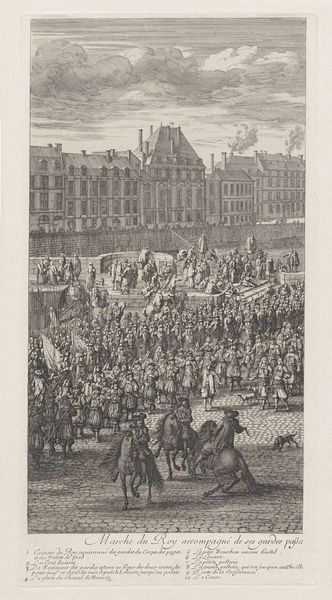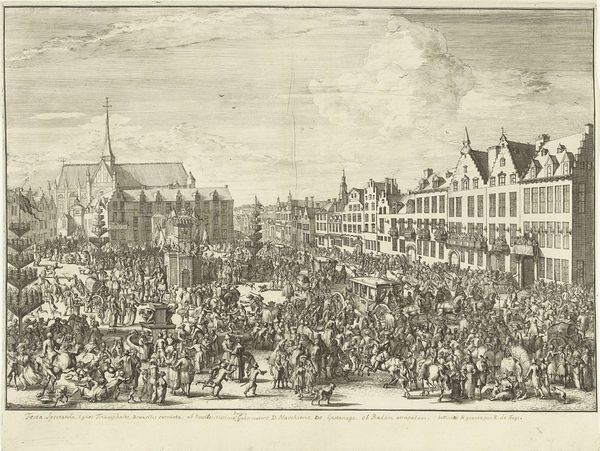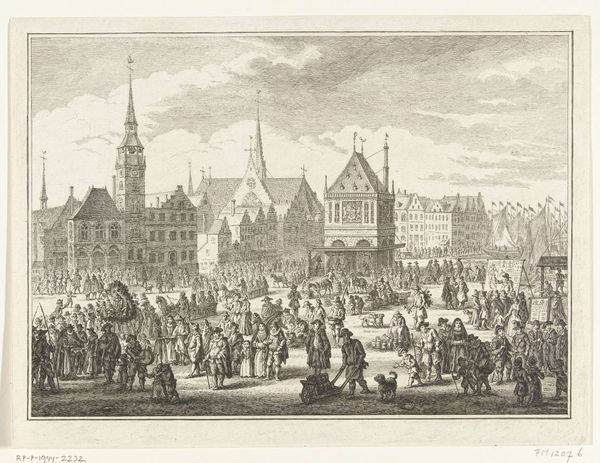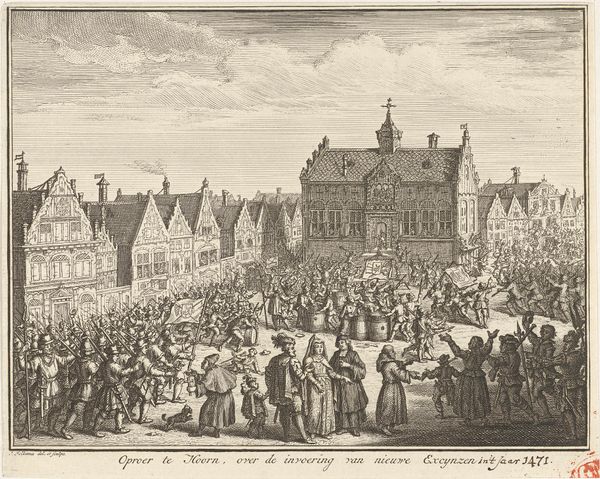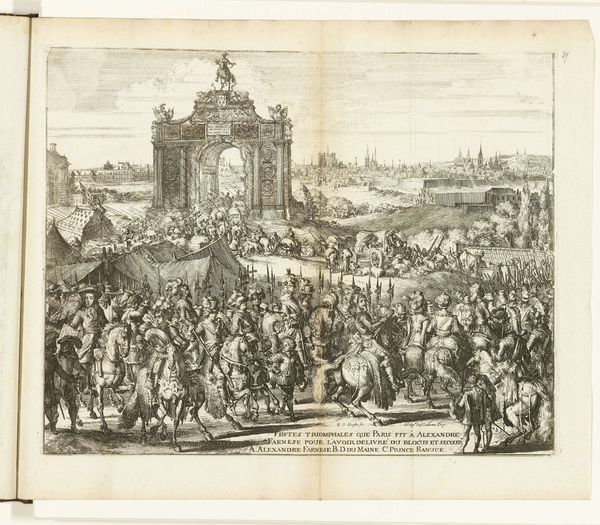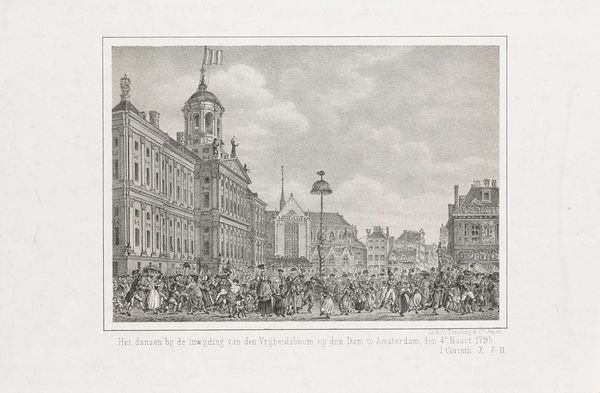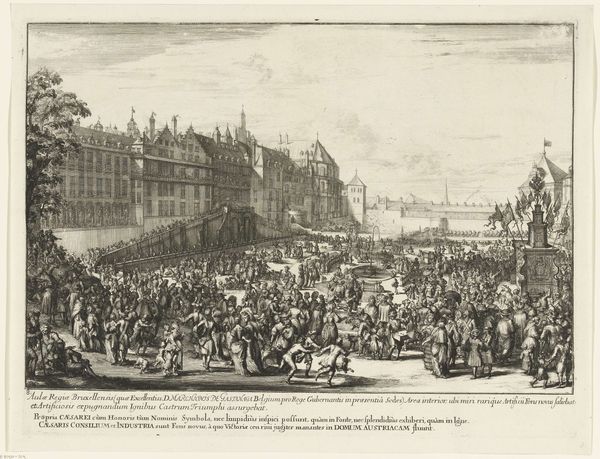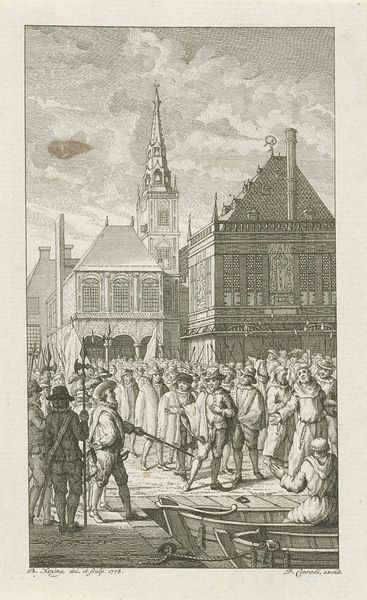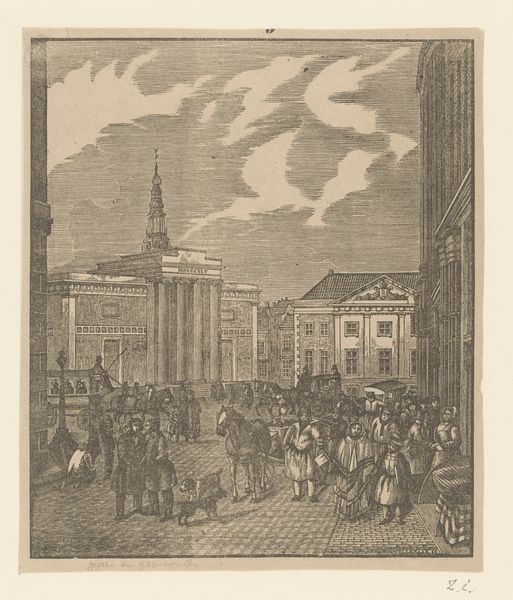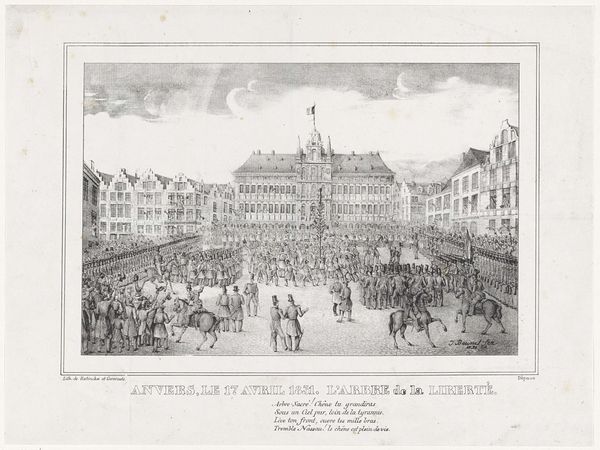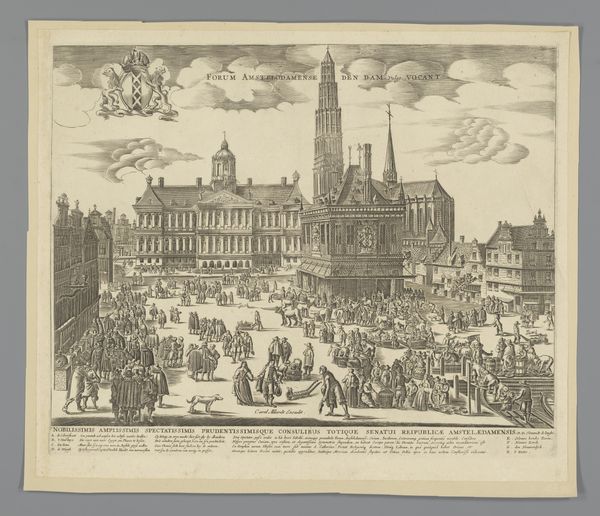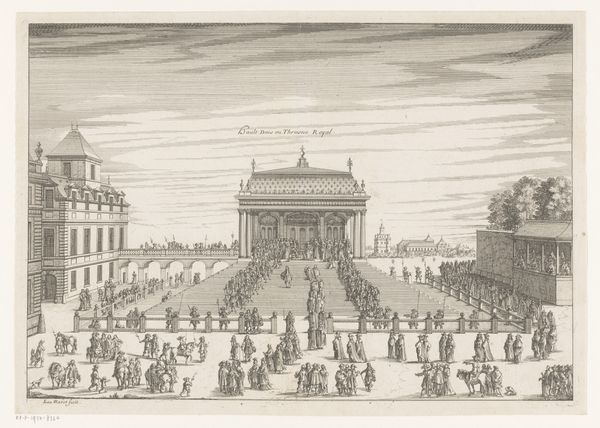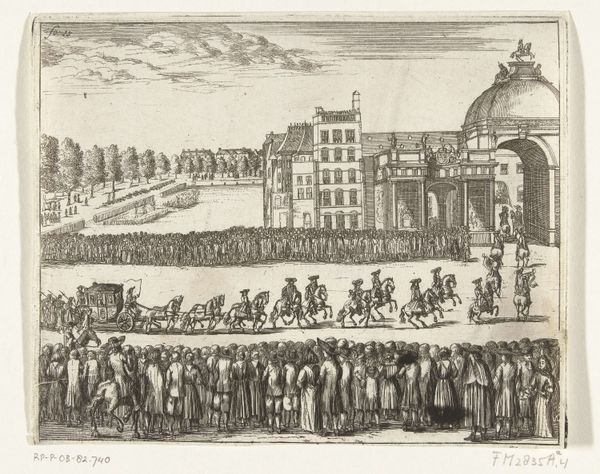
Achterhoede van de stoet van Koning Lodewijk XIV van Frankrijk op de Pont-Neuf 1667 - 1669
0:00
0:00
engraving
#
baroque
#
old engraving style
#
cityscape
#
history-painting
#
engraving
Dimensions: height 515 mm, width 290 mm
Copyright: Rijks Museum: Open Domain
Editor: My word, what a throng! Is this image intended to overwhelm? Curator: That's precisely the point, I think. We're looking at an engraving by Jan van Huchtenburg, created between 1667 and 1669. The title, "Achterhoede van de stoet van Koning Lodewijk XIV van Frankrijk op de Pont-Neuf", translates to "Rearguard of the Procession of King Louis XIV of France on the Pont Neuf." Editor: Rearguard indeed. The eye is pulled every which way – carriages, horses, people, buildings—it’s almost chaotic. It feels like a carefully manufactured display of power, though, doesn’t it? Showing off not just the king, but the sheer logistical might of his court? Curator: Absolutely. Huchtenburg captures the theater of absolutist rule. The Pont Neuf, the “new bridge”, becomes a stage. And notice how the event is framed: we see the Louvre palace in the background, underscoring the center of power that all this pomp radiates from. Consider how engravings like this would have functioned—replicable, circulated, reinforcing the image of Louis XIV throughout Europe. Editor: Right, so the material is important. An engraving allows for mass production and distribution of a carefully crafted image. Were these intended for a wider, more "common" viewership? To impress them with the grandeur and inherent right to rule? It speaks volumes about the technology available to consolidate that power. Curator: Exactly. Think about the engraver’s labor too. Each line meticulously etched to create this grand illusion, dependent on materials and craft that supported royal propagandizing. What appears almost incidental to modern viewers–the paper, the ink– were absolutely crucial tools in propagating that baroque vision of power and order, even as the reality of governing was always more messy and contested. Editor: It is a fascinating intersection. A dizzying display of opulence, meticulously crafted, reproduced, and disseminated as a tool for political persuasion. So, far from just a historical record, we're witnessing a careful construction of image, both politically and materially. Curator: Precisely. The event, the image, the production and distribution… it’s all carefully managed spectacle intended to assert dominance, and this work by Huchtenburg offers us the opportunity to pull apart that intricate layering of intent.
Comments
No comments
Be the first to comment and join the conversation on the ultimate creative platform.
